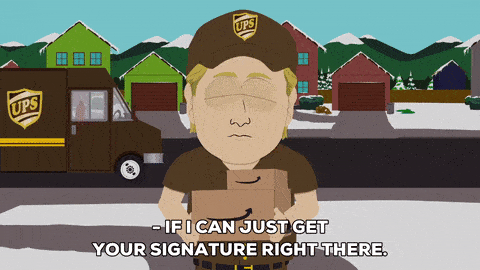Fact: Popups increase conversion rates.
Why? Because science.
But before we dig into the science, let’s take a look at why popups are a marketer’s best friend.

A second (and often last) chance to convert
Here’s something no one in ecommerce wants to hear: Prospects abandon websites in droves, and most will never return.
There are many reasons why visitors leave: they’re not swayed by your offer, they’re not the right fit (or they just don’t know it yet), they’re distracted, they’re rushed.
Regardless of why, it doesn’t take a scientist to point out that re-engaging abandoning visitors could dramatically improve your conversion rates.
This is where popups (a.k.a. your new “bestie”) come to the rescue.
Website popups provide a second chance for your audience to convert. And by focusing the visitor’s attention on just one timely, relevant and valuable offer (the trifecta of effective popups), your chances of conversion go through the roof.
Here’s an example…
Upon seeing the shipping costs associated with their order, a potential customer may decide to abandon the sale. Implementing a popup offering a deal on shipping could prevent cart abandonment and close the sale.
But why do abandoning users change their minds?
Back to the science.
#1: Popups counteract the paradox of choice
Think about the toothpaste aisle of your drugstore. There are whitening toothpastes, natural toothpastes, cinnamon flavored toothpastes… spearmint, peppermint, bubblegum!

With an online store, customers face a similar overload of options. They come in the form of multiple buttons, links and messages calling out for the visitor’s attention.
When they can’t decide, they flee. It seems that while humans are empowered by a little bit of choice, too much choice can result in analysis paralysis.
Author Barry Schwartz further illustrates this in his oldie-but-goodie book, The Paradox of Choice. In it he discusses the negative psychological impact an abundance of choice can have on our well being, and how eliminating choices can help reduce stress and anxiety.
Alleviating anxiety by way of eliminating options, then, is critical to making a sale.
It’s for this reason that landing pages are so effective in converting targeted traffic. By keeping the Attention Ratio at 1:1, landing pages focus a visitor’s attention on a single conversion goal, thus resulting in higher conversion rates than a page on your website.
But what about those web pages — shouldn’t they be optimized, too?
Yes, absolutely.
Popups take on the role of a helpful salesperson, tapping your prospect on the shoulder and asking if they can be of assistance. They narrow the visitor’s attention on a single, enticing offer, and simplify the decision-making process for potential customers.
SImply put, popups are effective for the same reason landing pages are effective: they eliminate distractions, provide the user with a last-chance offer and distill the choice down to a simple yes-or-no answer.
#2: Popups re-engage prospects by using a neuro-linguistic programming technique called pattern interrupt
Neuro what? Sorry, let me explain.
Pattern interrupt is a neuro-linguistic programming (NLP) technique that has been used by salespeople for years. The concept is pretty straightforward: do or say something unexpected to disrupt a person from their normal patterns.
By interrupting patterns we create moments for change, which is why some people use the technique for breaking bad habits. Even something as simple as slapping an elastic band against your wrist can help interrupt a regular pattern
Popups are driven by a similar logic. Unexpectedly, they show the visitor an offer that sweetens the pot, convincing them to think twice about their predictable path toward the ‘Back’ button.
In essence, you’re using the popup much like you would the rubber band, to get your visitor’s attention and then focus it on something else, like an unexpected deal related to what they were looking at initially.
#3: Popups leverage effective frequency by repeating and reinforcing your message
Several years ago I began seeing ads for a three-step skin clearing system that shall remain nameless.
At first I didn’t pay much attention to them, but after seeing ad after ad I started to wonder whether their claims had any validity; I was intrigued.
A few months later, I had a nasty breakout. I’d already warmed up to the idea of testing the product out, so I keyed in my credit card info and placed my order. A week later, a package arrived at my home with my first month’s supply.

That — what happened there — was the result of effective frequency.
Effective frequency is the number of times a prospect must be shown a particular message before taking the desired action.
There are varying theories on what the optimum number of times to show a message is — the law of seven, for example, suggests that it’s, well, seven. Whatever the case, it’s always more than once.
Popups leverage effective frequency by providing you with an additional opportunity to serve up and thus reinforce your message. By using an popup with similar messaging to your web page, you are in fact nudging your prospect toward becoming a customer.
Takeaways and learnings
Popups don’t work because they’re the shiny new thing. They work because scientific — and particularly psychological — principles are at play.
- Our brains don’t like complicated scenarios, and given how many we already face in daily life, the last thing we want are complicated consumer decisions. Simplicity of product choice = higher chance of conversion.
- People are habitual by nature. We have certain patterns that we subscribe to, often unconsciously, that allow us operate on “autopilot”. Disrupting this pattern creates a moment for change, and doing so with a popup may be just the thing to turn an unengaged visitor into a customer.
- The more times we’re served up a message, the more likely we are to believe it to be true. By reinforcing the message on your web page with a similar supporting message on your popup, you are in fact nudging your prospect toward becoming a customer.
Have you experimented with popups? I’d love to hear about it the comments.
